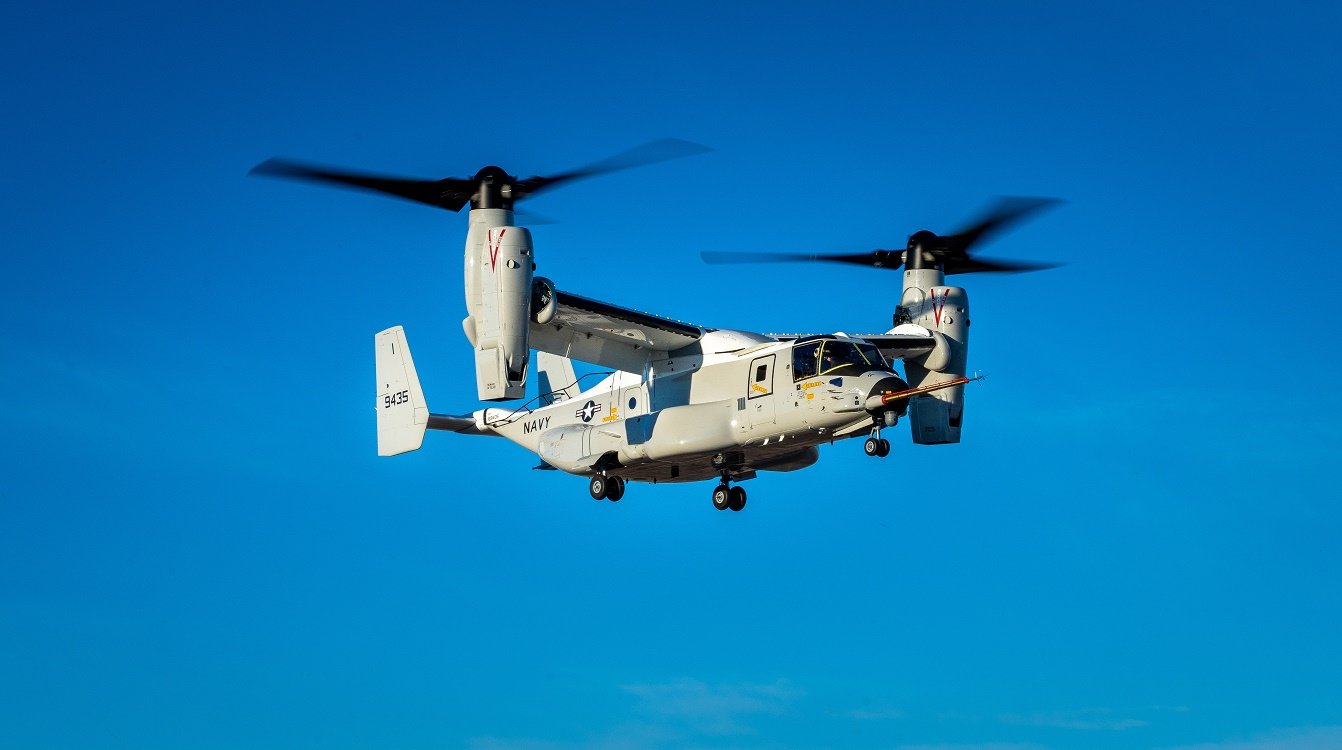One of the most controversial aircraft of the United States, the V-22 Osprey, crashed into the water off the coast of western Japan on November 29 with eight people on board.
The tilt-rotor V-22 Osprey fell off the island of Yakushima, and the Coast Guard reported that it had dispatched patrol boats and planes to the scene.
Just about three survivors of the crash were located in the nearby waters by fishing boats at the time of writing this report.
An airplane and patrol boat from the 10th Regional Coast Guard Headquarters have been sent to the crash site, according to the spokesperson, who stated that the Coast Guard received information about the incident at approximately 12:47 a.m. ET on April 27.
Japan Chief Cabinet Secretary Hirokazu Matsuno said that the aircraft disappeared from radar at 2.40 p.m. local time. A prefectural official in Kagoshima told CNN that the US military called the Yakushima Airport Management Office in Kagoshima Prefecture on Wednesday afternoon, seeking an emergency landing at Kagoshima Airport.
The Kagoshima prefectural officials did not, however, specify if the request originated with the US Air Force or Marines. The Japan Self Defense Forces, the US Marines, and the US Navy fly the aircraft, which can fly like a fixed-wing helicopter.
The incident is the latest in a long string of crashes documented through the years, with some resulting in major fatalities. The Osprey is a unique multirole combat aircraft that combines the vertical performance of a helicopter with the speed and range of a fixed-wing aircraft using tiltrotor technology. It can take off, land, and hover like a helicopter with its rotors in a vertical position.
Earlier this year, Pentagon spokeswoman Sabrina Singh said at a press briefing that “we do certainty have confidence in the Osprey.” Singh also emphasized that “each incident undergoes its investigation” and that she would refrain from “applying a sweeping broad stroke across every incident linking them together.”
“They’re all very unfortunate,” she said. Two weeks later, some unnamed US officials said that even in light of the recent fatal crashes, some of which have been linked to a mysterious, persistent mechanical problem, they continue to have faith in the CV-22 Osprey. They also categorically emphasized that the USAF, which uses the aircraft for special missions, remains committed to the aircraft.

The Marine Corps is renowned for having soldiers land on beaches during battles. However, this is challenging in the current era, especially with adversaries like China. Getting ships close enough to the coast to land men using military landing boats or conventional helicopters is not practical now that possible enemies have powerful beach defenses.
This is where the Osprey assumes significance. It permits amphibious ships to remain at sea for hundreds of kilometers at a time, allowing them to attack the beach from a distance. One of this tiltrotor aircraft’s greatest advantages is its combat utility, along with its range. This may be the reason why the US has refused to part with the C-22 Osprey, which it considers a prized possession.
Having said that, the C-22 Osprey has reportedly been reeling under pressure due to a mechanical problem. The latest crash is just one of the many such crashes that have startled US officials and raised difficult questions about the viability of flying this aircraft.
Osprey’s Continue To Crash
The latest incident is the second in Japan alone. In 2016, an MV-22, the variant used by the U.S. Marine Corps, crash-landed off Okinawa, following which the aircraft was grounded.
The following year, two more crashes were reported. A US Marine Corps MV-22 Osprey, assigned to the Marine Medium Tiltrotor Squadron, struck the USS Green Bay on August 5, 2017, after taking off from the amphibious assault ship USS Bonhomme Richard. The aircraft then crashed in Shoalwater Bay, on Australia’s east coast. Three of the 23 members were killed.
While the US was still recovering from the loss, less than a month later, in September of that year, another V-22 Osprey taking part in Operation Inherent Resolve in Syria suffered irreparable damage from a rough landing. There were two injured passengers. The non-salvageable Osprey caught fire immediately following the collision.
In March 2022, a US Marine Corps MV-22B taking part in the Cold Response military exercise crashed in Gråtådalen, a valley in Beiarn, Norway, killing four Marines.
Investigators found that pilot mistake resulting from low altitude, and severe bank angle maneuvers beyond the aircraft’s normal operating envelope was the primary cause of the disaster.
In another incident that same year, five US Marines died after their MV-22B Osprey plane crashed during a training mission near Glamis, California. The MV-22B Osprey went down in Imperial County, roughly 30 miles north of the US-Mexico border, at around 12.25 p.m. local time.
More recently, in August this year, an Osprey aircraft crashed during a training exercise off the northern coast of Australia, killing three crew members. According to Marine officials, the MV-22B Osprey, carrying 23 service members, went down in the Northern Territory of Australia, close to the Tiwi Islands.
According to officials, the Osprey was carrying soldiers as part of a “routine training exercise” in support of the joint military drill known as Operation Predators Run. Despite its cutting-edge capabilities, the aircraft remains marred in controversies. There has been a total of 51 fatalities reported across 13 accidents involving Osprey until the crash in Australia. With the latest crash in Japan, the number has swollen to 52.
The crash in Australia caused a widespread furore, with netizens calling for the aircraft to be pulled out of service. With another crash incident reported within months of the last fatal crash, the calls are expected to grow louder.
- Contact the author at sakshi.tiwari9555(at)gmail.com
- Follow EurAsian Times on Google News